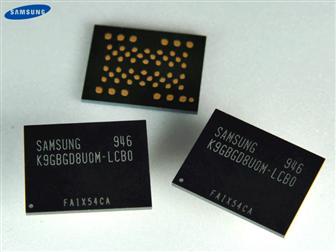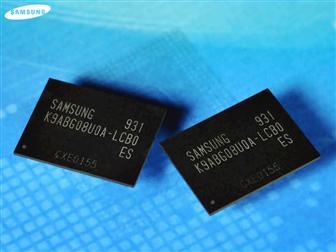
Samsung Electronics ha reso noto di aver avviato, a partire dalla parte finale del mese di Novembre, la produzione del primo lotto di chip di memoria NAND flash a 3-bit, caratterizzati da una architettura multi-level-cell (MLC), mediante il processo di fabbricazione a 30nm.
In base al comunicato del produttore, i chip saranno impiegati per la realizzazione di controller NAND a 3-bit e questi ultimi saranno a loro volta utilizzati per la produzione di memory card di tipo micro Secure Digital (microSD) aventi una capacitÓ pari a 8 gigabyte (8GB).
In accordo a Soo-In Cho, vice presidente esecutivo di Samsung, i nuovi chip NAND a 3-bit proposti dalla sua azienda saranno in grado di garantire, rispetto alle attuali soluzioni a 2-bit, una riduzione dei costi per il consumatore e, in ultima analisi, la diffusione di device di storage aventi una elevata densitÓ per la memorizazzione dei dati.



Samsung Electronics Co., Ltd., the world leader in advanced semiconductor technology solutions, announced today that it commenced the industry's first volume production of 3-bit, multi-level-cell (MLC) NAND flash chips using 30-nanometer (nm)-class process technology at the end of November. The chips will be used in NAND flash modules accompanied by exclusive Samsung 3-bit NAND controllers to initially produce eight gigabyte (GB) micro Secure Digital (microSD) cards.
"Introducing cost-efficient, 30nm-class 3-bit technology widens our NAND memory solution base to make NAND even more enticing for increasingly diverse market applications," said Soo-In Cho, executive vice president and general manager of the Memory Division at Samsung Electronics. "Our 3-bit NAND memory will support the development of more cost-competitive, high-density consumer electronics storage solutions," he added.
Three-bit MLC NAND increases the efficiency of NAND data storage by 50 percent over today's pervasive 2-bit MLC NAND chips. Samsung's new 30nm-class 3-bit MLC NAND will provide consumers with effective NAND-based storage that can be applied to USB flash drives in addition to a range of micro SD cards.
In 2005, Samsung introduced the first 50nm-class, 16Gb MLC NAND memory device, ushering in an era of unprecedented growth for flash memory beyond the high-performance SLC (single-level-cell) market. Mass production of 30nm 3-bit NAND is expected to significantly raise the portion of NAND flash memory production devoted to high densities (32Gb and above), designed to accommodate increased video usage.
Other NAND advancements, like the introduction of asynchronous double data rate MLC NAND memory (see separate release issued at 6:00 pm PT) are expected to also contribute greatly to this trend.
News Source: Samsung Press Release
Links
|